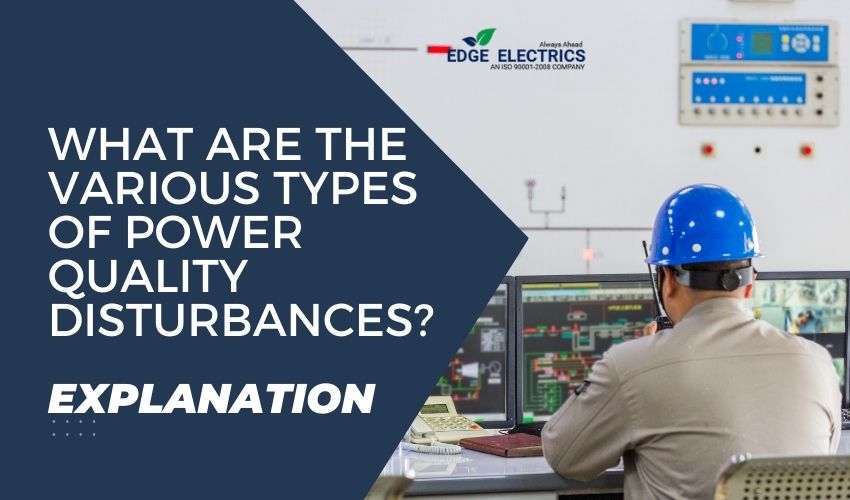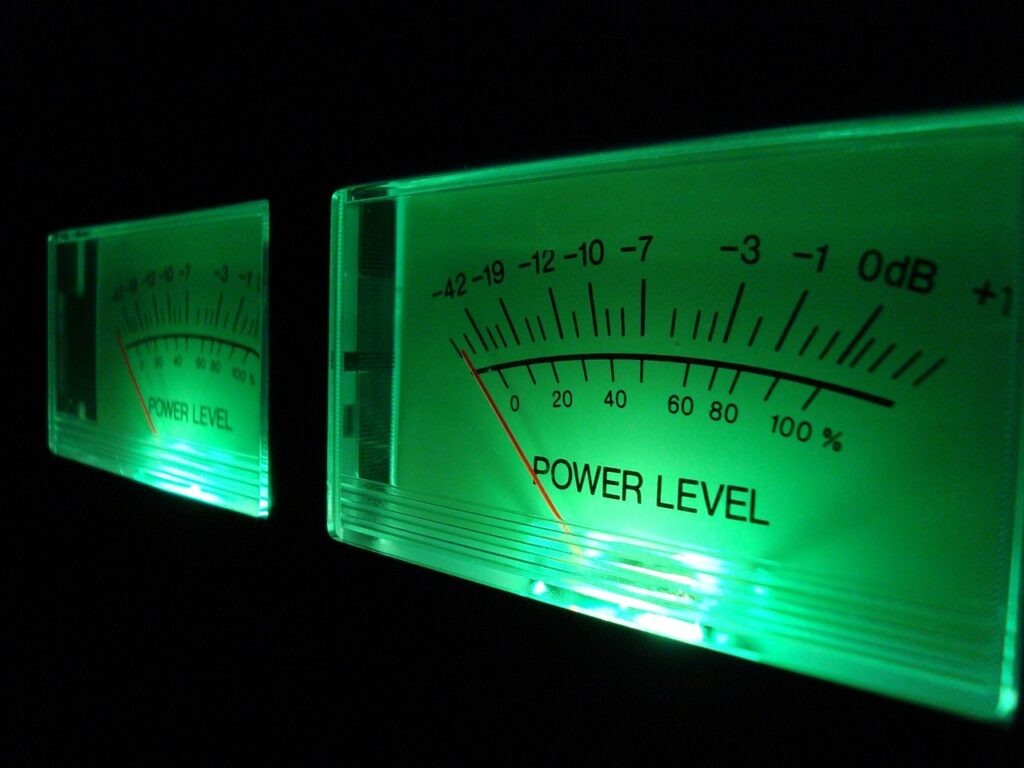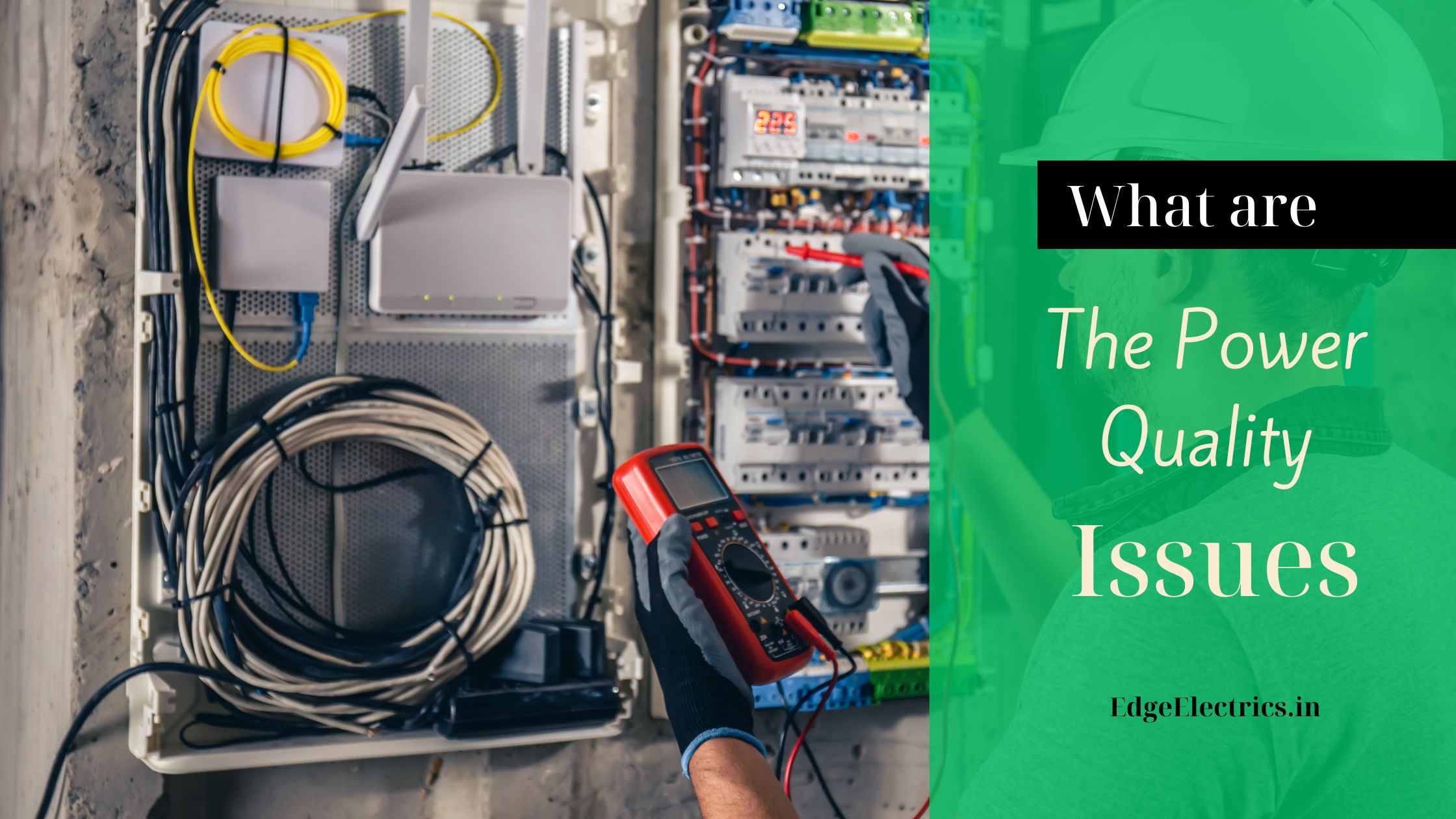
 Power Quality Disturbances are voltage sags, swells, spikes, fluctuation and flicker, harmonic distortion, noise and interference, power factor distortion, notch distortion, voltage unbalance, and temporary interruptions.
Power Quality Disturbances are voltage sags, swells, spikes, fluctuation and flicker, harmonic distortion, noise and interference, power factor distortion, notch distortion, voltage unbalance, and temporary interruptions.
Such disturbances may arise due to faults in the power system, load variation, and external disturbances. Power quality problems may result in trivial equipment malfunction and cause significant failures of the systems.
Power quality monitoring and mitigation techniques must be deployed to expose the root causes of these problems, and solve them, before they become disruptive. With knowledge of the power quality issues and their mitigation, it will enable us to improve system reliability reducing energy cost improving overall performance of the system.
What Are the Various Types of Power Quality Disturbances?
Voltage Disturbances
Electrical equipment performance and reliability can be affected by power-quality problems. Some common forms of terminal voltage are as follows:
- Voltage Sags: A temporary drop in voltage from the nominal level for periods from half a cycle to one minute.A decrease of the typical voltage level between 10% and 90% of the nominal RMS voltage for periods ranging from 0.5 cycles to 1 minute at the power frequency.
- Voltage Swells: Temporary increase in voltage above the nominal value, lasting longer than one cycle but usually less than a few seconds.
- Voltage spikes: Extremely high amplitude voltage surges with a very fast rise time in the order of microseconds to milliseconds duration.
- Voltage Swings: Variation in the voltage amplitude, usually due to switching operations or uneven distribution of load.
Harmonic Distortion
When voltage or current waveforms become non-sinusoidal, this is referred to as harmonic distortion.
Here are common source of harmonic distortion that lead to power Quality Disturbance.
-
Electric Machines:
Electric machines working in a region of saturation means that when their magnetic cores work above the knee of the magnetization curve.
All these lead to nonlinear magnetic phenomena, which result in electrical machines drawing non-sinusoidal currents and therefore, generating harmonic frequencies.
These situations are more common in scenarios where the load on the gear is asymmetric or asymmetric industrial settings demand it.
2. Arc Furnaces
Arc furnaces, which are routinely used for steelmaking and metal smelting, use like an electric arcschoke to produce high temperatures. The typical nature of the arc current is very discontinuous and irregular, leading to the generation of large harmonic distortion. Moreover, its fast oscillatory changes in the arc voltage and current also cause low power factors and electrical instability in the system.
Noise and Interference
Noise and Interference mean that high-frequency signals will be overlaid on the power system fundamental frequency waveform, distorting quality
It can happen for many reasons. Here are the two leading causes of power quality disturbance.
-
Electromagnetic Interference (EMI)
This is caused by Hertzian waves originating from radio transmissions, business devices and switching instruments.
-
Inadequate Grounding
If the grounding systems are improper or faulty, noise can be partially propagated through the power network.
Power Factor Distortion
Power factor distortion is an indicator of the efficiency of an electrical system that may be defined as the ratio of real power (useful power) to apparent power (total power supplied by the source).
The problem of power factor distortion arise due to the following problems
Poor Electrical Power Factor of Reactive Load
Nonlinear or reactive load like motors, transformers, and power electronics consume superfluous reactive power, causing diminished power factor.
1.Harmonic Currents
These currents distort the current waveform and are produced by devices such as rectifiers, variable frequency drives, and select lighting systems.
2. Imbalance Loads
Electrical loads that are not distributed uniformly over phases cause an imbalance to form in the system.
Notch Distortion
Notch distortion is defined as a very short duration, low amplitude disturbance in system waveform.
Sometimes it is due to notch distortion and the most common causes are–
Changes in Load: Sudden switching of loads, such as motors or large appliances, can create brief disturbances.
.Power System: Various state events, such as faults, transient conditions and/or switching operations may create notches in the waveform
Nonlinear Effects Nonlinear devices: Power electronics such as thyristors or inverters cause periodic notches because of the switching action.
Temporary Interruptions
A temporary interruption corresponds to a very short electrical power disconnection that can last a few milliseconds or several seconds.
Causes:
Some usual reasons for temporary interruptions consist of:
Faults: Short circuits or grounding faults in the power system.
Switching: In the power network, planned or unplanned switching of a circuit or equipment.
Fleeting Ones: Outside powers, for example, lightning strikes, creature obstruction, or tree contact with force lines.
Causes and Consequences of Power Quality Disturbances
There are several key causes of faults in electrical power systems arising due to the various physical and operational phenomenon which can lead to serious consequences. Knowing these factors is important to ensure maximum system up-time and efficiency.
Causes
1. Transmission or Distribution Network
If there are faults in the transmission or distribution network, it can seriously affect the electrical supply.
A short circuit at a fault in a power line, transformer or equipment can temporarily create excessive current. Excessive voltage or lack of it, is usually a result of overworked circuits, equipment faults or drive insufficiently regulated voltage supply which causes damage to the electronics.
Interruptions and voltage transients due to line faults/grounding issues (broken conductors and poor grounding) reduce the reliability of the electrical system.
Such power quality disturbances are harmful to both the infrastructure of the utility and the equipment of consumers, demanding reasonable mitigation means.
2. Consumer Installations
Power quality problems are the result of some consumer installations. Problems such as voltage fluctuations, harmonic distortion, and transient events can occur due to improper connections, human factors by equipment footprints.
Such problems can lead to poor performance of electrical devices, increased energy consumption, and even safety hazards. Periodic consumer setups upkeep and also presents can assist in locating opportunity strength great quality troubles and also correcting them, thereby making sure an reliable and also constant electricity supply.
-
Connection of Heavy Loads
Heavy machines or high-power-consuming devices can create substantial power-quality disturbance if they switch ON/OFF up suddenly or lead to improper connections.
Such loads can cause demand spikes and therefore voltages fluctuations, surges or even outages.
Overload can harm the plant and also temporarily stop many operations, but flaws in the distribution network affects multiple consumers. Ensuring good load management and connection is essential to provide a steady state supply of power.
Consequences of Faults
1. Malfunction of Information Technology Equipment
Voltage sags or spikes from electrical faults that interrupt the functioning of sensitive IT equipment can cause data loss and hardware damage.
2. Tripping of Contactors and Electromechanical Relays
Normally these protective devices like contactors and relays.Sometimes activate due to a fault but disconnecting power from the load to prevent further damage. This can lead to unintended interruptions for consumers
3. Disconnection and Loss of Efficiency in Electric Rotating Machines.
When faults occur, electric motors and generators might see these units become less efficient, or the entire unit disconnecting which could lead to assets being offline for minutes, hours or sometimes months depending on how long it takes to fix it.
Identifying and Mitigating Power Quality Disturbances
Methods for Identifying and Mitigating Power Quality Disturbances
Using Power Quality Analyzers and Monitoring Systems
Power Quality Analyzers (PQAs) are important tools for the measurement and analysis of electrical power parameters. They are capable of identifying disturbances such as sags, transients and harmonics.
Continuous Monitoring Systems monitor power quality on a real-time basis, enabling data-based identification of recurrent problems. Data Logging and Trends analysis of power quality problems are important so that patterns can be identified that may not be revealed in brief measurements.
Identifying Symptoms of Power Quality Issues
Electrical equipment performance and reliability can be severely affected by power quality disturbances. Common power quality issues include: voltage sags and dips, voltage surges and spikes, harmonics, flicker, and frequency variations.
Voltage waves in sensitive electronics can trip them or make them malfunction, harmonic waves cause overheating and loss of efficiency as well. Flicker, varying brightness that will interfere with visual work and cause fatigue. Motors and other machinery can operate at less than optimal speeds due to these frequency variations. Understanding and tackling these problems will help you to get the best performance from your system and also, extending the life of your equipment.
Correcting Issues Before They Damage Equipment
There are a number of approaches to resolve power quality disturbances and protect sensitive equipment.
Power conditioners filter out unwanted harmful disturbances and stabilize voltage while surge protectors, barriers from surges and bursts in electricity and voltage regularders protecting circuits.
Harmonic filters mitigate harmonics, and modern products having built-in protection with stronger construction are more resistant. Proper wiring and grounding systems also reduces installation overheads. When implementing it all together, these techniques can help organizations alleviate power quality problems and maintain reliable operation of its critical systems.
Importance of Identifying and Mitigating Power Quality Disturbances
-
Maintaining Reliable Power Systems
Power quality management enables systems to be reliable and run quite effectively which prevent outages, minimize downtime, and enhances system reliability. Proper management of power quality disturbances ensures that electrical systems are able to provide a smooth operation process without sudden interruptions.
-
Efficient Energy Use
Harmonics are responsible for power quality disturbances, which can waste energy and increase operational costs. With the aim of reducing energy consumption and improving cost efficiency, facilities can tackle these issues.Better energy quality mean happier, more efficient energy use which leads to lower operational costs for businesses.
-
Preventing Equipment Damage
These power quality disturbances that include voltage spikes, sags surge can do irreversible damage on sensitive electrical equipment which involve expensive repairs and replacements. When addressed early on, these risks can be mitigated.Harmonics are responsible for power quality disturbances, which can waste energy and increase operational costs. With the aim of reducing energy consumption and improving cost efficiency, facilities can tackle these issues.
-
Compliance with Standards
Different sectors and many regions around the world set power quality standards to secure safe and efficient functioning. Compliance with regulations and avoidance of penalties help organizations to enhance their reputation as well.
Conclusion
Power quality disturbances can create chaos in the operability of electrical and electronic systems. Power quality analyzers and monitoring systems are critical in detecting and diagnosing such problems, while rectification can include filters, voltage regulating devices or even prime mover’s servicing to mitigate damage and inefficiencies.
Proactive power quality management allows enterprises to save costs, increase their assets life, and most importantly ensures stable continuous operations.
continue reading
Related Posts
Maintaining Good Power Quality includes several important characteristics such as […]
Ensuring good power quality is crucial in electrical systems. As […]
What is Power Quality Classification? Power quality classification is a […]



